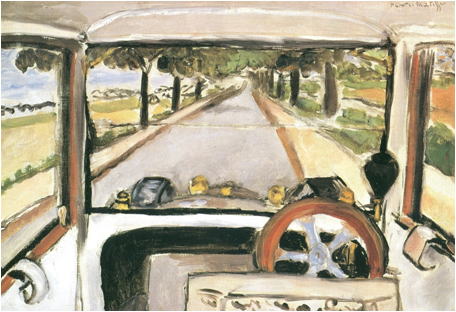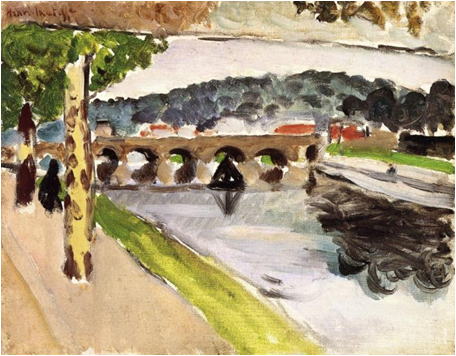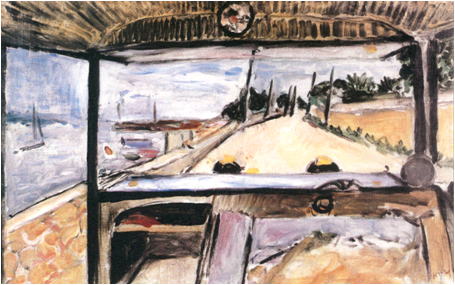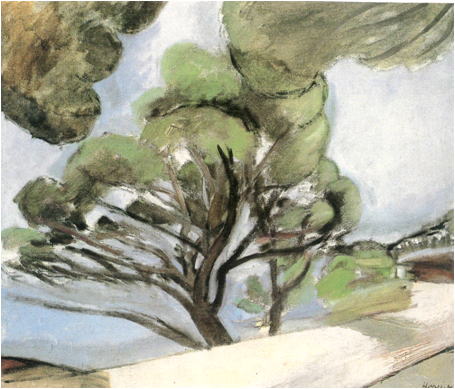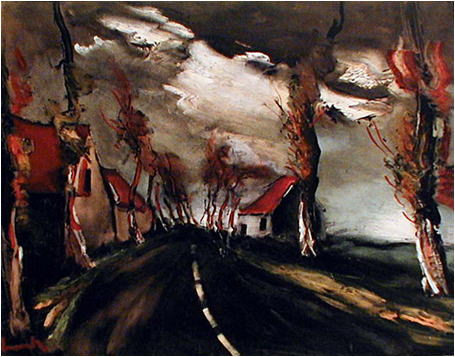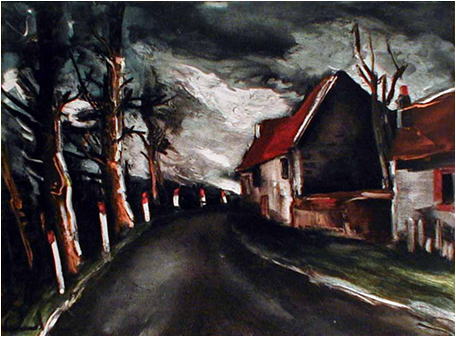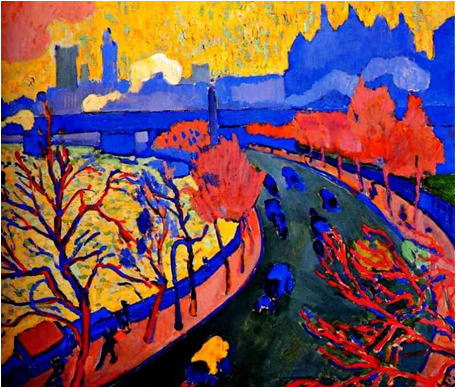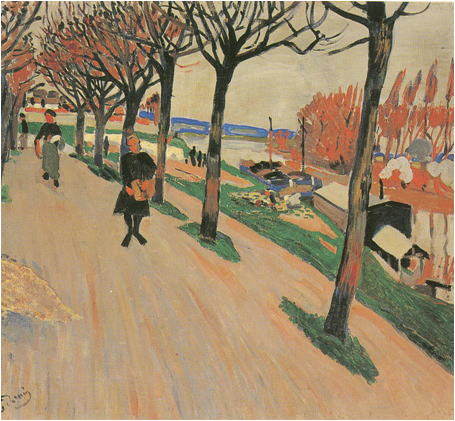Fauvism and the Automobile:
A Transformation of Visual Perception in the Twentieth Century
By Tomoki Akimaru
(tomoki.akimaru[at]gmail.com)
Fauvism was influenced by the automobile!
If you look through the window of a moving car, images that are closer appear rougher. Your tactile perception declines while you momentarily glance at objects passing by. In an interview with Léon Degand, Henri Matisse (1869-1954) stated the following regarding visual perception:
By car, one should not drive faster than 5 kilometers per hour. Otherwise, one doesn’t feel (making a feeling gesture with his hand) the trees anymore.
Louis Aragon has argued that Matisse’s painting titled The Windshield (1917) was the first painting to depict the world as seen from the inside of a car. Matisse also created a series of paintings depicting scenes viewed from the driver’s seat.
Driving a car at high speed will stimulate your aggressive instinct; it will make you behave like a wild beast.
Henri Matisse, The Windshield, 1917, oil on canvas.
Cleveland Museum of Art, Ohio.
Henri Matisse, The Bridge of Sèvres with Plane Trees, 1917, oil on canvas.
Private Collection.
Henri Matisse, Antibes, View from Inside an Automobile, 1925, oil on canvas.
Private Collection.
Henri Matisse, Road in Cap d’Antibes (The Large Pine), 1926, oil on cardboard.
Private Collection.
A number of art critics, such as Jean Cassou and René Huyghe, contend that Maurice de Vlaminck (1876-1958) was influenced by the images he witnessed while driving a car at high speed. Indeed, Vlaminck vigorously painted many turbulent landscapes, giving the impression he was infatuated with speed. Moreover, he described the following scene as witnessed from an accelerating car in his novel titled Dangerous Corner in 1929:
The headlights probed the roads like two long luminous paint brushes; they moved gently, picking out swelling hill-sides and valleys. The throb of the eight cylinders was scarcely noticeable, so sweet, even and silent was the engine. The trees seemed about to cast themselves down on to the bonnet of the car, and as we swept by, they rustled in our draught. The racing “torpedo” ran at 110 kilometers per hour. The eyes of rabbits, lit by the beam of the headlight, were like the lamps of belated cyclists pedaling through the dark. The road now became an immense white ribbon, now a black snake, stretching into infinity. It seemed to be devoured by the bonnet of the car and swept suddenly behind.
In addition, André Derain (1880-1954) drove a number of Bugattis; one of them had a top speed of 240 kilometers per hour. He told Foujita Tsuguharu that it is pleasant to drive a car at high speed. A car that does not run at high speed cannot be called a car.
Maurice de Vlaminck, The Mortagne Road, 1953, oil on canvas.
Private Collection.
Maurice de Vlaminck, The Logny Road, 1953, oil on canvas.
Private Collection.
In fact, Derain painted Charing Cross Bridge (1906), a painting that depicts speeding motor vehicles. He also painted The Seine at Pecq (1904), which seems like an image observed from the driver’s seat of a speeding car.
All three painters were familiar with images flashing through the windows of a speeding car. It is undeniable that the fleeting scenes from a speeding automobile coupled with increased aggressive instinct influenced the violent coloring of Fauvism.
André Derain, Charing Cross Bridge, 1906, oil on canvas.
Musée d’Orsay, Paris.
André Derain, The Seine at Pecq, 1904, oil on canvas.
Musée National d’Art Moderne de Paris, Paris.
